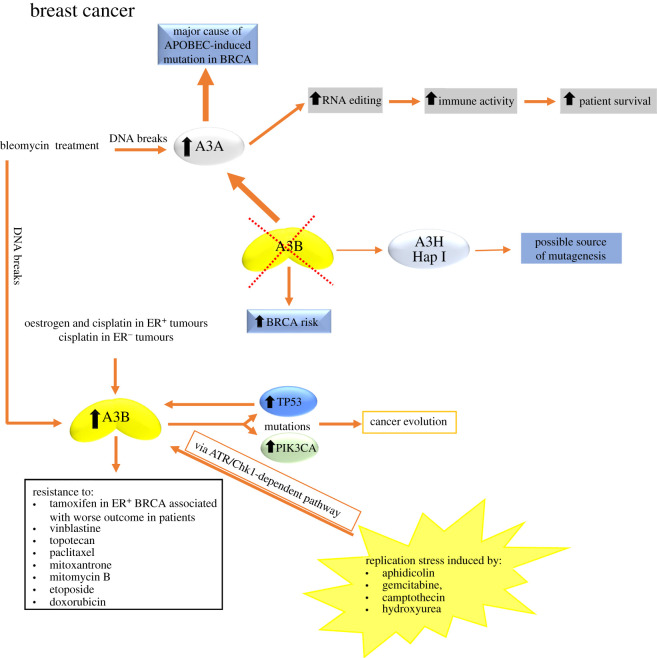Figure 3.
Causes and effects of A3 upregulation in BRCA. Causes of A3B upregulation could include the action of hormones (oestrogen), DNA-damaging drugs (cisplatin, bleomycin) and replication stress. The induction of A3B was found to be stronger in the presence of mutant TP53 compared to wild-type TP53. A3B upregulation contributes to increase mutations in TP53 and PIK3CA genes driving to cancer evolution and A3B upregulation is also associated with worse outcomes in cancer patients as well as with resistance to many anti-cancer drugs. In the absence of A3B, there is an increased risk to develop BRCA. A3A has emerged as a major cause of APOBEC-induced mutations in BRCA. Also, in the absence of A3B, A3H Hap I could be a source of mutagenesis. Bleomycin treatment can also upregulate A3A, although the effect is more robust for A3B. The upregulation of A3A is also associated with an increased RNA-editing activity that positively correlated with patient survival. For more details, see §5.1.

